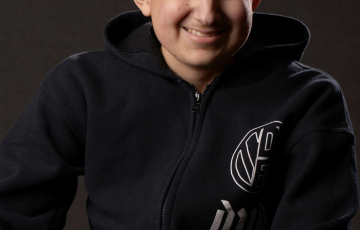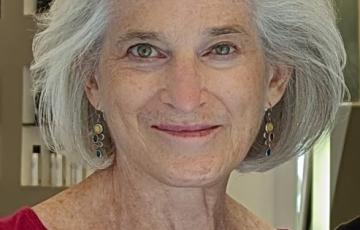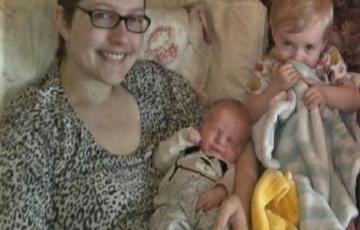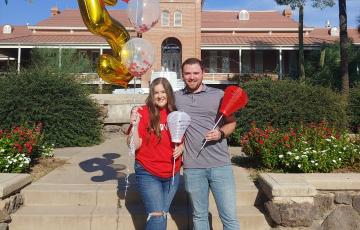Search Results

Nick
My former student, Nick K. was a previous honoree of The Leukemia & Lymphoma Society (LLS). Diagnosed with a PNET brain tumor at age 4 and enduring two bouts of acute myeloid leukemia (AML) as a result in the years to follow, Nick was obviously a fighter!

Laura
I became aware of The Leukemia and Lymphoma Society (LLS) after I was diagnosed with acute lymphocytic leukemia (ALL). A social worker at the hospital where I was being treated gave my information to the LLS Patient Services Manager, and she called me. Then she gave me the contact information for a patient who had young children like mine and was two weeks ahead of me in the process, and we spoke with each other.

Amanda
In October 2018, I was diagnosed with stage 2 Hodgkin lymphoma, oh and I was 5 months pregnant at the time. I had been having recurring bronchitis and sinus infections for several months and I self-diagnosed myself with chronic bronchitis or sinusitis. I went into urgent care in October with severe flu symptoms and a persistent cough that would not go away. I tested negative for influenza and the doctors couldn't find any other type of infection to explain my symptoms. They thought maybe I had pneumonia and asked if I wanted to do an X-ray, given I was pregnant.
Lisa
It's not easy being bald, a bald physician, and a bald wife. This is my third dance with Hodgkin's Lymphoma (HL). I first met HL in college, as many young girls meet their first pivotal relationship. Sadly for me, I attended an all woman's college, so my pivotal 'boyfriend' came in the form of a first cancer diagnosis.

Justin
In March 2012, when Justin was in the sixth grade, he started to rapidly lose weight, was experiencing extreme exhaustion and night sweats. After multiple visits to the doctor but no answers, his parents finally took him to the hospital for more intensive testing, including a bone marrow biopsy. One day later they received the shocking diagnosis: acute lymphoblastic leukemia.

Grace
I’m 15 years old, and I’m a ballerina, Junior Zoo Keeper at Cheyenne Mountain Zoo, actress, singer, and I am a childhood leukemia survivor.
When I was five years old, my parents noticed that I was getting a lot more bruises and nose bleeds than usual (even living in New Mexico at the time). My abdomen was really swollen and I was taking frequent naps, which was also alarming to my parents. They took me to an urgent care location near my house where the doctors said that I was fine.

Louise
During the last week of July 2019, Louise, then-two-and-a-half-year-old, developed unusual red dots on her chest and some gnarly, yet explainable, bruises all over her body. We chalked the rash up to wearing an unwashed shirt and the bruises to being an extremely active two-year-old. Then, after her gums bled one afternoon, we hopped on Google and became increasingly concerned with the search results. However, Louise wasn’t acting “sick,” so her parents ignored Dr. Google’s diagnosis.

Madeline
Being in a very close-knit family, we were devastated upon learning of our sister Madeline’s diagnosis of AML. There were 4 of us girls and all 3 of us wanted to do anything to help our sister survive. Our biggest challenge was staying positive and offering her and her family support. The 3 of us were tested and I was her perfect match. I was overjoyed to be able to do this for her. Although my other sisters felt let down that they weren’t, we were all constant support through her journey.

Jennifer
Jennifer of Hayward, CA, was diagnosed with myeloma (MM) in 2008. During this process, she endured a year of intense chemotherapy, followed by an autologous stem cell transplant where her own stem cells were harvested and reintroduced into her body on January 8, 2010. This resulted in an extended hospital stay followed by radiation treatments. She is currently in remission and remains under doctor’s care. After her diagnosis and treatments, she wanted to give back to others living with the disease.
Allison
My story is not all that different from many others. It began with two-year-old me not feeling well and my mom taking me to the pediatrician on a Monday. They diagnosed me with an ear infection and gave me antibiotics. On Friday, still not better, my mom asked my dad if they should let the doctor take another look at me. In my mom’s words, “Something’s not right with my little girl.” Fortunately, the doctor ran a platelet test. My results were so off the charts that she also ran the test on herself to make sure the machine was not broken.
Miah
I am 28 years old and was diagnosed with stage 4 non-Hodgkin lymphoma (NHL) when I was 27. I am a mother of two (a 5-year-old boy and a 7-year-old daughter). I am a licensed esthetician in Chicago and have run my own beauty business for six years.

Donna
I was shockingly diagnosed with a monoclonal spike in November 2019 (six months after the unexpected death of my mom). Treatment was started in June 2020. I went to Mt. Sinai NYC where they have a team that just deals with multiple myeloma (MM). I am grateful that a couple of people recommended I go there. They treated me with four drugs, one of which wasn’t available at my local oncologist. The regimen was Velcade, Revlimid®, daratumumab, and dexamethasone. I had this induction therapy until my stem cell transplant in March 2021.

Flavio
On November 8, 2023, our world changed forever when my husband Flavio was diagnosed with B-cell acute lymphoblastic leukemia (B-ALL). What began as a normal recovery from Achilles tendon surgery quickly spiraled into something far more serious. It started with comments about how pale his skin had become, a sign we now realize was the first red flag. I also noticed unusual bruising on his back, but it was dismissed by the surgeon. After several more concerning moments where Flavio was left weak and exhausted from even simple tasks, we decided to get routine bloodwork done.
Rex
In December 2023, I woke up in the middle of the night and couldn’t catch my breath, so my wife called an ambulance. I was taken to a nearby hospital where I was diagnosed with blood cancer, Philadelphia chromosome-positive acute lymphoblastic leukemia (Ph+ ALL), to be exact.

Dellyanett
I was healed from cancer in 90 days! God's glory was displayed in my life in such a major way! I knew I was coming into this with VICTORY and coming out of it in VICTORY! My faith was elevated to another level. It was only a season of my life that came and went, TO GOD BE THE GLORY! This happened at a time when I was going to move to Atlanta Georgia to pursue what God has called me to do. One of those things was Acting. It seemed that at that time everything was working in my favor.
School
This page includes information about:
Treatment
It's important that your doctor is experienced in treating patients with acute myeloid leukemia (AML) or has access to an AML specialist.
Types of AML TreatmentDoctors use several types of treatment for adults with AML, some at different stages. Click on the links below to read more about each type of treatment.
Stem Cell Transplantation
For some patients who are in remission and can tolerate intensive chemotherapy, the doctor may recommend stem cell transplantation during the consolidation phase of chemotherapy.
Getting a Second Opinion
Leukemia, lymphoma, myeloma and myelodysplastic syndromes are each different types of cancers. What's more, each disease has subtypes. This means that the signs of the disease, how it's diagnosed and treated and the expected outcomes vary. That's why it's essential to have the right diagnosis before you begin or continue with treatment.
Managing Sexual Side Effects
An important part of managing side effects that impact your sexual health is to determine what factors may be causing or contributing to the changes you are experiencing, so that you can address them. Sexual side effects during cancer treatment can include:
Supportive Care
Supportive care is given to improve the quality of life for patients with MF. The goal of supportive care is to prevent or treat the symptoms of MF.
AnemiaAnemia is observed in more than 50 percent of patients with MF at the time of diagnosis. Before considering treatment options, it is important for doctors to rule out and treat the most common causes of anemia such as bleeding, iron deficiency, vitamin B12 deficiency and folic acid deficiency.
Treatment

Maggie
I often said that cancer showed up at the worst time for me. I was finishing my first year of medical school and was in the midst of a very busy season finishing all the planning for my upcoming wedding. But honestly, is there ever a good time for cancer to show up? Would it have been better five years later as a busy, working doc? Or even later on with kids to take care of? Likely not. The truth is cancer is never a welcome visitor. It disrupts everything and turns life upside down.

John
In January 2020, I had returned to my home outside of Charleston, South Carolina, from a 28-day assignment to Anchorage, Alaska. Even though I had returned on December 15, I had picked up what we thought was a cold. The cold would not go away. My wife insisted that I get a chest x-ray for what we thought was pneumonia. Cancer was the last thing on my mind. I was working as an aircraft mechanic at Joint Base Charleston.

Zoie
My mom thought it was the flu, maybe mono. After I spent five days lying in bed, she took me to an Urgent Care Clinic. I knew it was something far more serious after they called an ambulance. My mom wouldn’t believe the Urgent Care doctor when he told her he suspected it was cancer. Unfortunately, he was right. I was 11 when I was diagnosed with acute lymphoblastic leukemia (ALL).